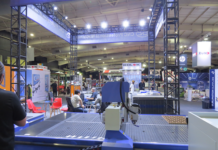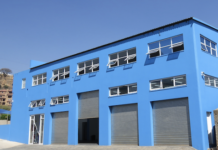According to Nir Evanhaim, writing for Massivit 3D, jigs and fixtures are critical components used in the manufacturing process. Since these tools guide, hold, and position workpieces during production, they’re paramount in ensuring consistency and precision during the manufacturing process, resulting in high-quality end parts.
For many years, CNC machining was the primary method used for the production of jigs and fixtures. However, with the recent advancements in 3D printing technology, this process is now becoming a viable alternative.
Here are five reasons why 3D printing full-scale jigs and fixtures is better than CNC machining.
1. Faster iteration
With 3D printing, jigs and fixtures can be produced in hours or days, whereas CNC machining can take weeks. This allows for faster iteration of designs, resulting in a more efficient and cost-effective process. 3D printing also enables the creation of complex geometries that may be impossible or difficult to produce with CNC machining.
2. Greater efficiency
In addition to the faster production time, large-scale 3D printing can also improve the efficiency of producing jigs and fixtures by bringing this process in-house. Operating a 3D printer does not require a technician, as is the case with CNC machining. Printing your own jigs and fixtures means a quicker turnaround, and printing on-demand requires greatly reduced inventory space.
3. Improved functionality
3D printing allows for the creation of complex geometries and internal structures that may not be feasible to the same degree of accuracy with CNC machining. These features can improve the functionality of jigs and fixtures, resulting in more accurate and efficient production of parts. Additionally, 3D printing materials can offer properties such as stiffness, strength and thermal stability, which can be tailored to specific applications.
4. Customisation and personalisation
Jigs and fixtures produced with 3D printing can be customised and tailored to specific applications or production lines. This customisation allows for more efficient and effective production, as custom-designed jigs and fixtures specifically meet the needs of various stages of the production line. Additionally, 3D printing enables the production of personalised jigs and fixtures, which can improve worker productivity and comfort.
5. Reduced lead times
CNC machining requires an extensive tool path set-up, resulting in longer lead times. 3D printing, on the other hand, has minimal set-up time and can produce jigs and fixtures in a matter of hours. This reduced lead time can improve production efficiency and reduce costs associated with downtime.
MASSIVIT 3D
https://massivit3d.com/
















